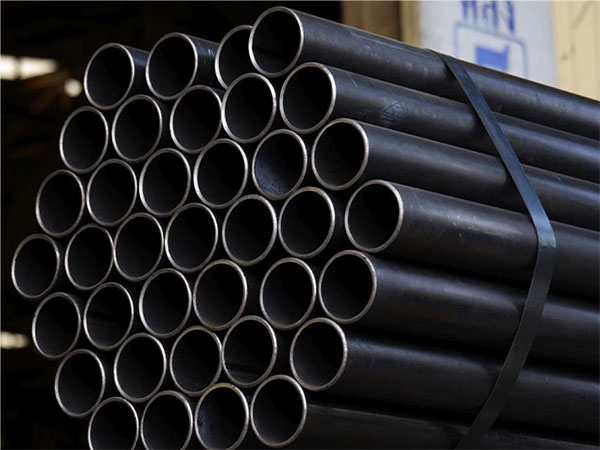Carbon steel pipes are one of the most common types of chilled water pipes. There are many types of chilled water pipes, using different materials and different manufacturing standards to give it different characteristics in different places.
Carbon steel pipe due to oxidation, the natural state of black, so it is also called carbon steel pipe for
black carbon steel pipe. Carbon steel pipe is generally pressure resistant, high strength, relatively low price, often used in water systems. In cold water systems, carbon steel pipes are often used to transport chilled water supply and return water, so they are also known as CHWS pipes (chilled water supply pipes) and CHWR pipes (chilled water return pipes).
When using carbon steel pipes in chilled water systems, it is necessary to comprehensively consider the characteristics of the material, environmental requirements and maintenance management, mainly the following points:

Advantages of carbon steel tubes
High strength: high pressure resistance, suitable for large flow or high pressure systems.
Low cost: Compared with stainless steel or copper pipes, carbon steel pipes are more economical.
Easy processing: Support welding, flange or thread connection, flexible installation.
Problems that need attention
1. Corrosion risk
Low-temperature condensate corrosion: Although the temperature of the chilled water is low (5-12 ° C), the surface of the pipeline may be dew due to environmental humidity, and long-term exposure to a humid environment will lead to rust.
Water quality impact: If the water contains chloride ions, dissolved oxygen or pH value is abnormal, it will accelerate corrosion (such as pitting, uniform corrosion).
Solution: Using internal anti-corrosion treatment, the inside of the carbon steel pipe is coated with epoxy resin, galvanized or lined with plastic. Strengthen water quality management, regularly test water quality, add corrosion inhibitors, adjust PH value. The closed system design reduces the contact between the steel pipe and oxygen and reduces the risk of oxidation corrosion.
2. Heat preservation and anti-condensation
Apply insulation layer: prevent condensation on the outer wall of the pipeline (avoid condensate damage to the building structure) and reduce the loss of cold water.
Insulation material selection: rubber, polyurethane, glass wool.
3. Installation and maintenance
Welding requirements: After welding, the welding slag should be cleaned to avoid local corrosion caused by residue.
Support and hanger anti-cold bridge: the use of thermal insulation gaskets to prevent cold conduction through the bracket.
Regular inspection: focus on inspecting welds, joints, elbows and other corrosion-prone parts, timely treatment of rust.
Common types of cryogenic tubes
1. Welded low carbon steel in accordance with BS 1387 Class C standard
Chilled water pipes from 15 mm to 150 mm are welded mild steel pipes manufactured according to BS 1387 Class C. The manufacturing process involves welding rather than cold-drawn or hot-rolled seamless tubes. BS 1387 Class C is also known as BS 1387 thick gauge. "Class C" is equivalent to "thick gauge". They are of the same size. However, if you are looking for a more economical option, Class B or medium gauge is also available.
2. Welded carbon steel according to JIS G3452 standard
Chilled water pipes from 200 mm to 450 mm are welded carbon steel pipes manufactured according to JIS G3452. Such manufacturing processes also involve welding and have welds. JIS G3452 also applies to pipes from 15 mm to 450 mm. Welded carbon steel pipes that comply with JIS G3452 are considered standard carbon steel pipes. They are no longer further subdivided into different types.
3.ERW carbon steel meets API 5L Class B standards
Chilled water pipes from 500 mm to 600 mm are made of ERW (resistance welded) carbon steel pipes manufactured to API 5L Class B standards. Such manufacturing processes also involve welding and have welds. API 5L Class B chilled water pipe wall thickness can be 7.9 mm or 9.5 mm. Needless to say, 9.5 mm wall thickness pipe is stronger, but also more expensive.
Conclusion
Carbon steel pipes are more cost-effective in chilled water systems, but they need to be strictly controlled in anticorrosion, insulation and water quality management. If the budget allows or the environment is corrosive, stainless steel pipes can be considered; When the pressure requirement is not high, plastic pipe is also a feasible option. Regular maintenance is the key to extend the life of carbon steel pipes.
Read more:How to reasonably choose water supply piping materials?
